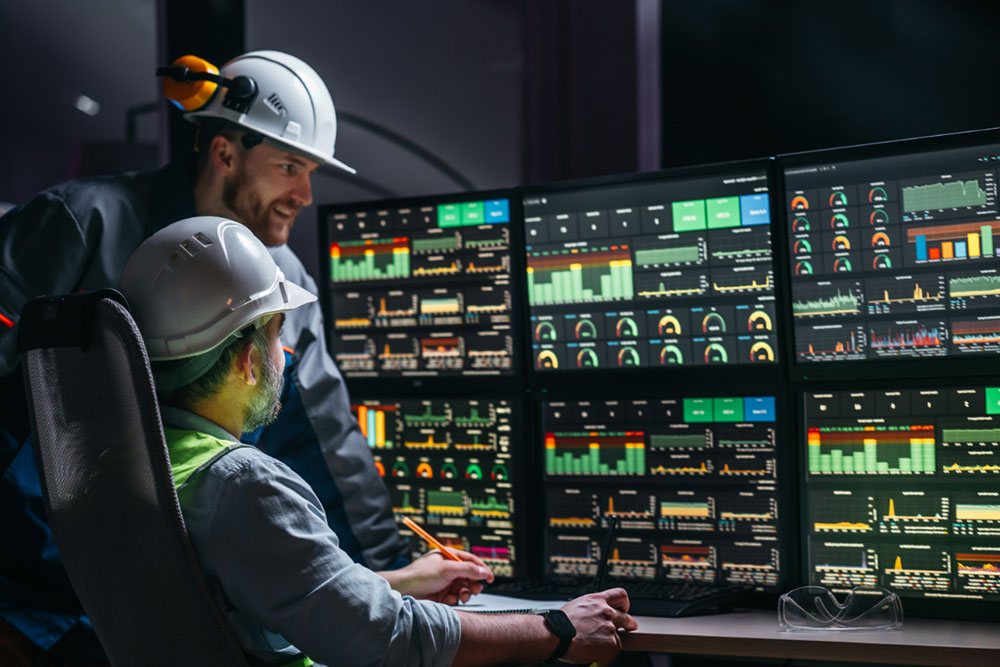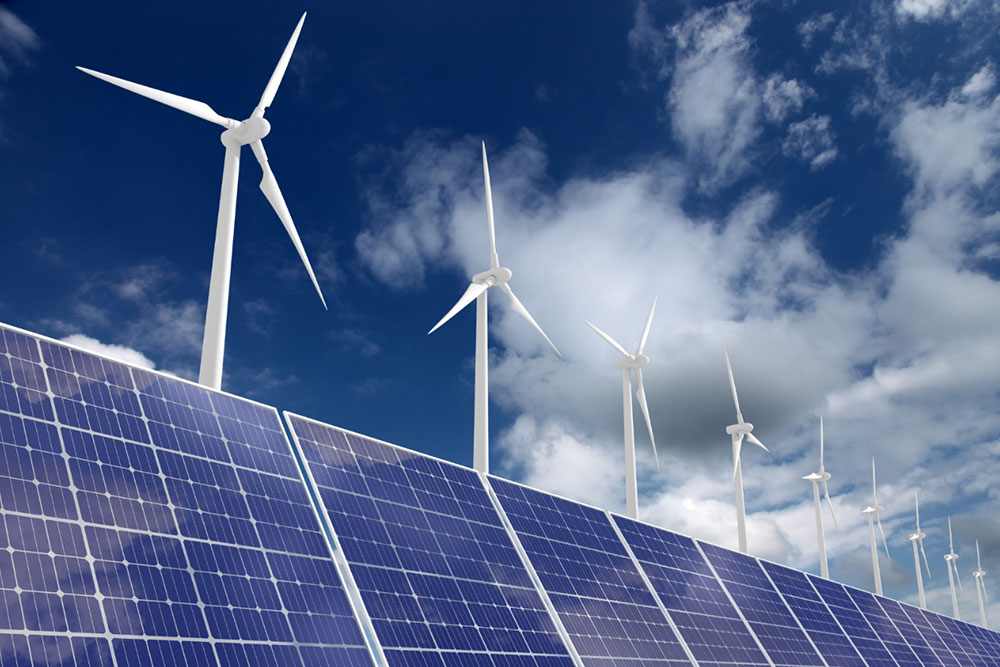
The Next Evolution in Renewable Energy Optimization
The renewable energy industry has rapidly embraced AI-driven solutions to optimize operations and enhance energy yield. Digital Twins (DTs) have already revolutionized asset management by providing real-time virtual models of physical assets, improving efficiency by up to 5%. However, as energy grids become more complex and volatile, a new frontier is emerging—Agentic AI.
Unlike traditional AI, which analyzes data and suggests optimizations, Agentic AI autonomously acts in real time, continuously monitoring energy systems for peak performance. With its ability to self-learn and make autonomous decisions, Agentic AI is reshaping how renewable energy assets operate.
Agentic AI represents a paradigm shift from static AI models to dynamic, self-improving algorithms that can predict, act, and optimize energy systems autonomously. As we move towards a more distributed, intelligent, and responsive energy infrastructure, leveraging AI-driven automation becomes not just a competitive advantage but an operational necessity.

Moving Beyond Passive AI to Autonomous Optimization
While Digital Twins have enabled predictive maintenance and operational visibility, they still require human intervention for key actions. Energy operators struggle with reactive maintenance, manual system adjustments, and suboptimal asset utilization, leading to efficiency losses. The industry is now at a pivotal moment—where passive AI-driven insights must evolve into autonomous, real-time optimization.
Apollo Energy Analytics is pioneering this shift, integrating Agentic AI with Digital Twins to drive an additional 3% gain in energy yield, pushing total optimization up to 8%. The imperative is clear: renewable energy operators must adopt self-optimizing systems to maximize profitability and grid stability.
Without AI-powered automation, energy operators face ongoing challenges such as unexpected downtime, inefficient asset performance, and grid instability—all of which lead to revenue losses and increased operational costs. The integration of Agentic AI into energy management is not just about achieving efficiency; it’s about ensuring long-term financial and environmental sustainability.

The Limitations of Current AI & Digital Twins
Despite advancements, three key challenges persist in renewable energy management:
- Reactive vs. Proactive Maintenance: Traditional AI enables predictive maintenance, but energy operators still experience unexpected equipment failures due to slow intervention. Reactive maintenance leads to higher costs and lower asset availability.
<liReactive Detection & Energy Losses: Traditional Digital Twins enable simulations, but asset failures are still identified reactively. This delay in detection leads to suboptimal energy generation and operational inefficiencies.
- Grid Inefficiencies & Energy Curtailment: Without real-time adaptability, excess power is wasted, leading to financial and operational inefficiencies. Traditional AI-driven forecasting is helpful, but it lacks the ability to take direct action in real time.
Agentic AI + Digital Twins—A Game-Changer for Renewable Energy
Apollo Energy Analytics has developed a next-gen solution that merges Agentic AI with Digital Twin technology, enabling self-regulating energy systems that maximize efficiency and minimize downtime. Here’s how:
1. From Predictive to Proactive Maintenance
Agentic AI doesn’t just predict failures—it automatically identifies faults, compares real-time sensor data with historical patterns, and recommends corrective action before breakdowns occur. This proactive approach reduces maintenance costs and unplanned downtime, improving asset longevity.
Traditional maintenance approaches rely on fixed schedules or historical failure data. However, these methods often lead to unnecessary servicing or, worse, overlooked failures. Apollo’s AI-driven approach ensures real-time adaptation, enabling smart maintenance decisions that reduce costs while improving reliability.
2. Autonomous Performance Optimization
Instead of relying solely on manual intervention, Agentic AI analyzes real-time environmental data to recommend optimal solar panel cleaning schedules, asset warranty claims and energy storage & trading cycles. While direct actuation is not yet fully autonomous, the system provides actionable insights that enable rapid optimization and higher energy output.
For example, in a solar farm, AI-driven analytics can continuously assess sunlight conditions and suggest adjustments to panel tilt and orientation for improved efficiency. In wind energy, Agentic AI can analyze wind speed and turbulence patterns, guiding operators to dynamically optimize turbine pitch for maximum performance.
3. Self-Healing Energy Systems
When a component fails, Agentic AI identifies the faulty equipment and automatically redistributes load across remaining assets, ensuring uninterrupted performance. This level of autonomy significantly enhances system reliability and efficiency.
By leveraging AI-driven self-healing mechanisms, Apollo ensures that energy operators can maintain near-constant uptime. Unnecessary outages and energy curtailments are minimized, leading to greater stability in power generation.
4. Smart Grid Integration & Dynamic Energy Dispatch
To combat energy curtailment, Apollo’s AI-powered forecasting system analyzes grid demand and supply fluctuations, dynamically optimizing battery storage utilization. This ensures more renewable energy is used, reducing reliance on fossil-fuel backups.
The ability to intelligently allocate energy is especially crucial as renewable energy penetration increases. By leveraging AI to match energy supply with demand in real time, Apollo helps grid operators minimize waste and maximize economic returns.
The Impact: Higher Yields, Lower Costs, and a Sustainable Future
By integrating Agentic AI with Digital Twins, Apollo Energy Analytics delivers tangible benefits:
- 8% increase in total energy yield (compared to 5% with DT alone)
- 15-20% reduction in maintenance costs due to proactive fault detection
- 10-15% reduction in energy curtailment, maximizing renewable energy utilization
- Improved asset life expectancy, reducing the need for costly replacements
The transition to fully autonomous AI-driven energy optimization is a game-changer for asset operators, offering significant financial and operational gains. Companies that adopt these technologies today will position themselves as leaders in the renewable energy transition.

The Future: AI-Driven Autonomy in Renewable Energy
As AI continues to evolve, the future lies in full autonomy—where energy systems self-regulate based on real-time conditions and market dynamics. Emerging integrations, such as blockchain-powered peer-to-peer energy trading, could further enhance decentralized energy management.
Apollo Energy Analytics is at the forefront of this revolution, ensuring that Agentic AI isn’t just a theoretical advancement, but a real-world game-changer for renewable energy operators. Looking ahead, we expect greater AI autonomy, where renewable energy plants function as self-learning, self-optimizing entities. By integrating AI with advanced IoT sensors, quantum computing, and edge processing, energy operations will become more efficient, reliable, and cost-effective.
Conclusion: Time to Transition from Insights to Action
The energy industry no longer has the luxury of passive optimization. Agentic AI + Digital Twins offer a transformational leap from predictive insights to autonomous action, unlocking higher yields, lower costs, and greater sustainability.
If you’re ready to unlock the full potential of your energy assets, let’s connect today!






Leave a Reply